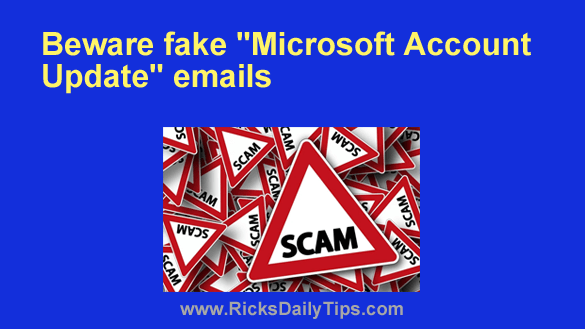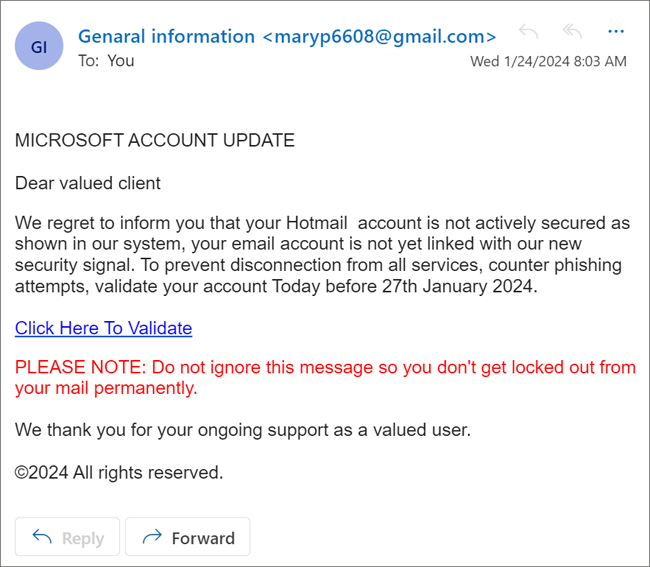 Phishing scam attempts are distributed in many forms, but most of them arrive in our email Inboxes in the form of fraudulent emails.
Phishing scam attempts are distributed in many forms, but most of them arrive in our email Inboxes in the form of fraudulent emails.
The scammers are getting better at their evil craft by the day and it’s pretty hard to tell some of the fake emails from real ones.
Luckily, that isn’t the case with this latest round of phishing emails.
Here’s a screenshot one such email that landed in my Inbox this morning:

At a casual glance this email looks like it was sent from Microsoft Support, but there are several clues that it’s actually from a scammer:
1 – The sender’s email address is a Gmail address. If this message had been legitimate it would have been sent from the microsoft.com domain (for example, something like [email protected]).
2 – The customer is addressed as a generic user (“Dear valued client”) instead of the user’s actual name.
3 – When I hovered my mouse pointer over the “Click here to validate” link, the link preview pointed to a third-party scam web page, not an official Microsoft page.
4 – The email is riddled with grammar, punctuation and capitalization errors.
As I have mentioned several times in the past, no legitimate company will send out an email with this many errors in it. In fact, they usually take great pains to ensure that their correspondence is completely error free.
Bottom line: If you receive this email (or one that’s similar to it), rest assured that it’s a scam. Simply mark it as such in your email client, then delete it and forget about it.